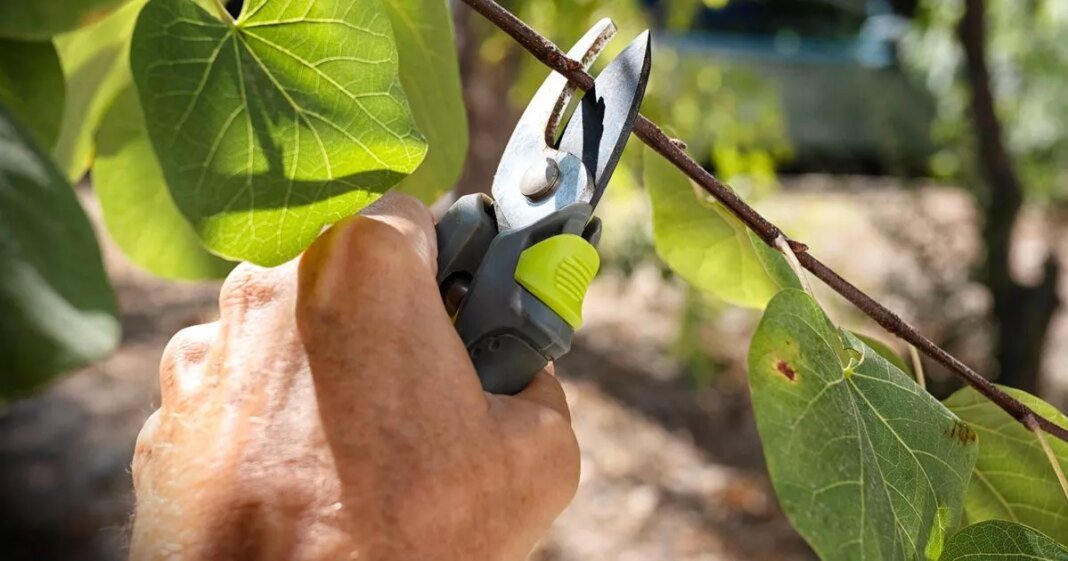Garden enthusiasts are set to reap the rewards of their dedication as spring brings a burst of new life in gardens across the nation. However, green thumbs should pay special attention to three particular plants, according to gardening expert Adam Frost. The expert gardener highlighted the importance of “picking the timing” for plant care during the transitional period of spring.
Speaking to Country Living, he advised: “To decide when to prune, think about how plants behave in nature. In winter, when trees are dormant, they will drop any weak and dead wood, so it’s the best time to prune trees. In general, most trees and shrubs should be pruned after they have flowered.”
Adam also stressed the significance of technique in pruning, particularly focusing on the three D’s: “Dead, diseased and damaged wood”. He guided gardeners by saying: “Cut stems on a slant as this encourages rainwater to drain away.”
For ensuring the health and vigour of plants, Adam recommended always cutting close to a healthy leaf bud and warned against leaving too much stem above a cut to prevent dieback and potential infection.
He further advised: “Look for a bud that is outward-facing. If branches grow inwards, they tend to become congested.”, reports the Express.
When it comes to spring pruning, Adam noted that certain plants such as lavender, buddleia, and ornamental grasses typically need trimming back.
By following these pruning practices, gardeners can encourage a lush display of flowers, foliage, and vibrant stems, fostering a thriving garden as the season progresses.
If you’re eager to trim like a pro, Mediterranean shrubs such as lavender are best pruned in spring, after the harsh winter conditions. This is beneficial as the old stems and flowers shield new shoots from frost during winter.
In early April, trim lavender stems back by one-third to one-half, focusing on green sections and avoiding cutting into old, woody wood to stimulate new growth and a compact shape. Other tender shrubs that should be pruned in spring include cistus and rosemary.
Flowering shrubs that bloomed in the summer, including fuchsia and buddleia, should be cut back hard in spring to trigger a burst of new growth from the base of the plant. This will ensure plenty of flowers for the upcoming season.
First, trim back the top growth to around half its height for better access to the base of the plant. Cut through the thick woody stems, around 30cm above the ground and, where possible, prune just above a bud or growing shoot.
Using a pruning saw or lopper, remove any dead stubs and branches. Aim to produce a short, strong framework of five to six main branches.
If you don’t prune your buddleia, it will get taller and scruffier-looking, and the amount of big, bold blooms you get per square foot of shrub will decline.
These will gradually be replaced with twiggy, leafy growth with small flowers.
In spring, deciduous grasses like Miscanthus that have stood over winter can be cut back hard. All the brown growth should be removed, leaving any new green stems behind.
For smaller clumps, use secateurs, removing each old stem individually and being careful not to cut off the emerging new shoots.
For larger clumps, hedge trimmers can be used, but you should leave about 10cm of the old stems to avoid cutting through new growth.
At Reach and across our entities we and our partners use information collected through cookies and other identifiers from your device to improve experience on our site, analyse how it is used and to show personalised advertising. You can opt out of the sale or sharing of your data, at any time clicking the “Do Not Sell or Share my Data” button at the bottom of the webpage. Please note that your preferences are browser specific. Use of our website and any of our services represents your acceptance of the use of cookies and consent to the practices described in our Privacy Notice and Cookie Notice.



